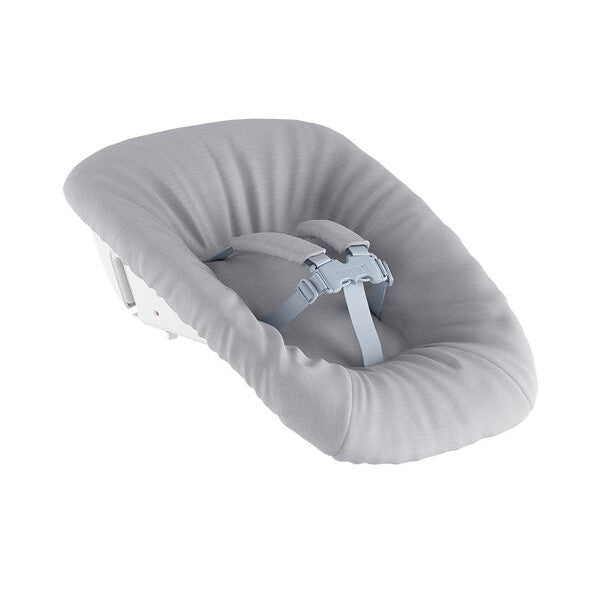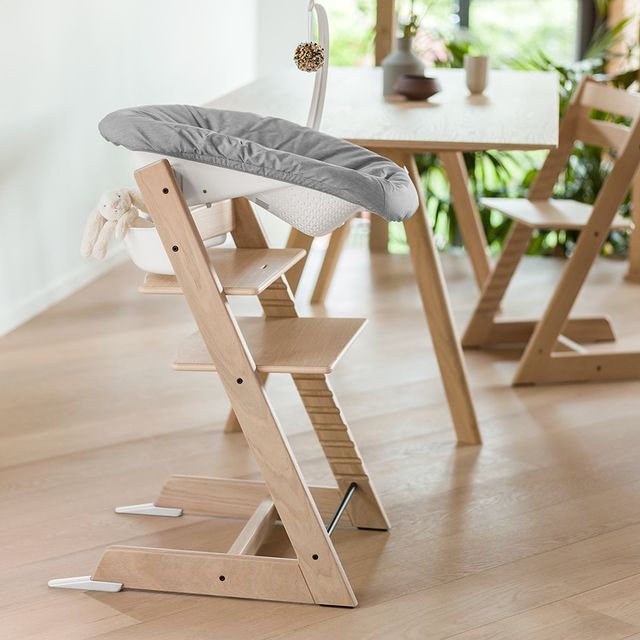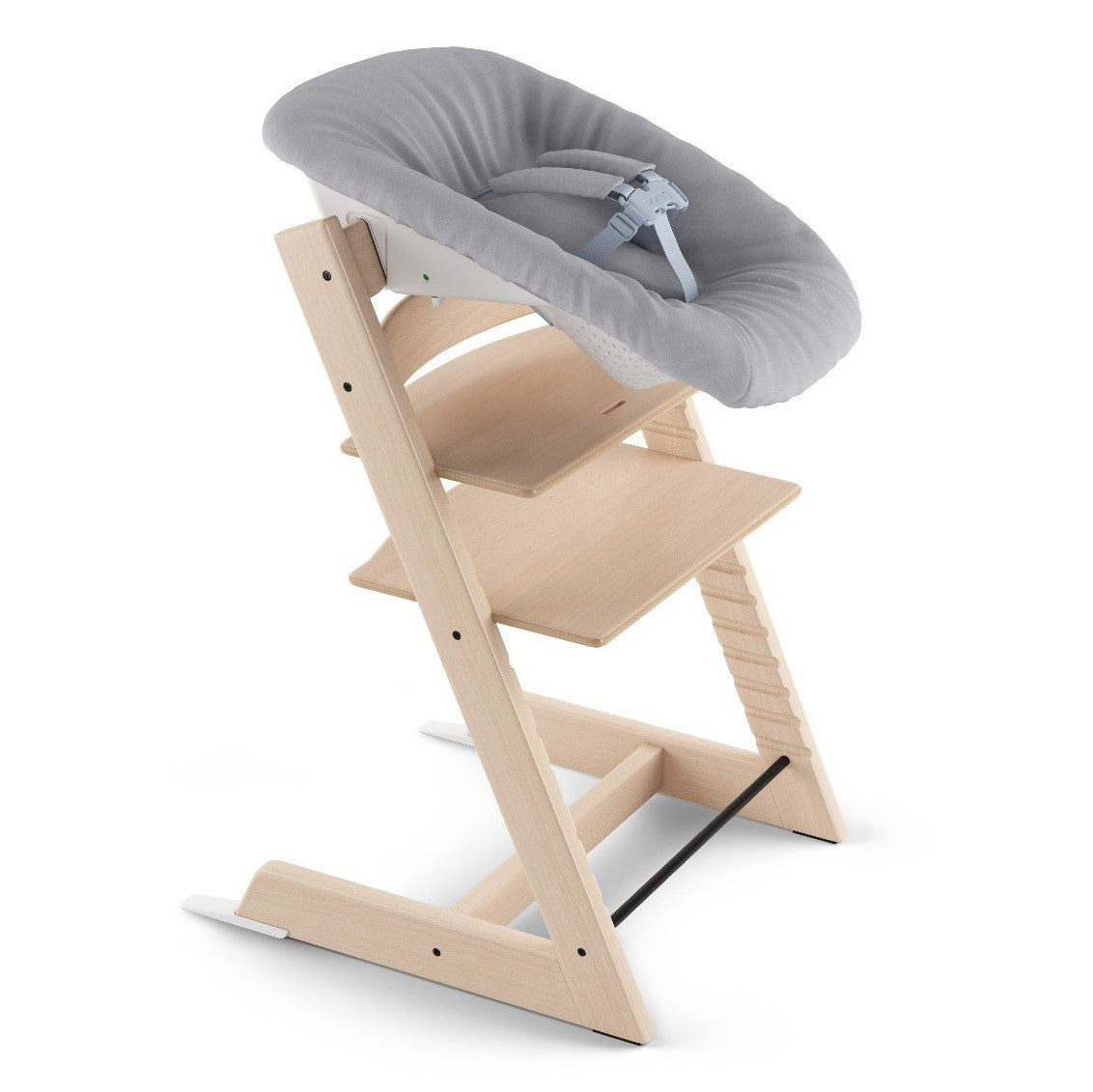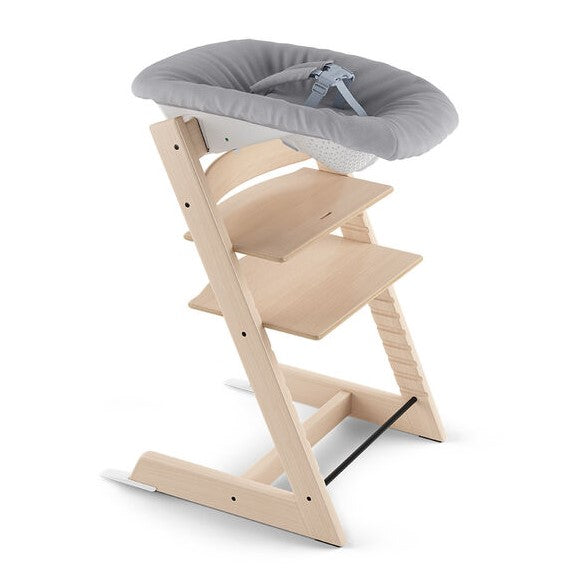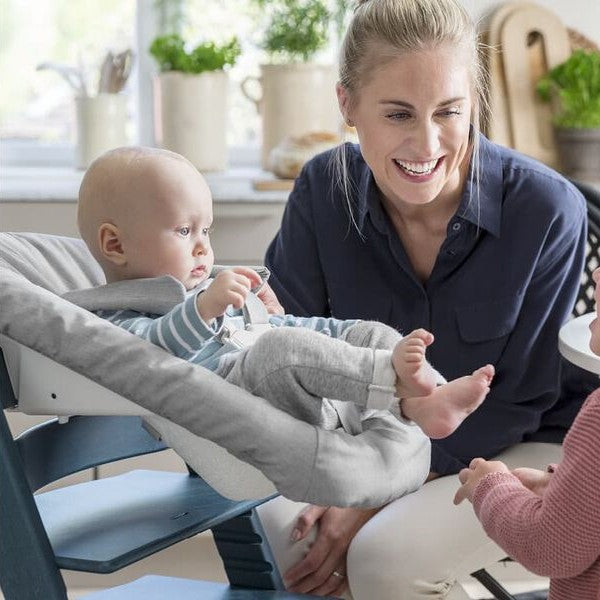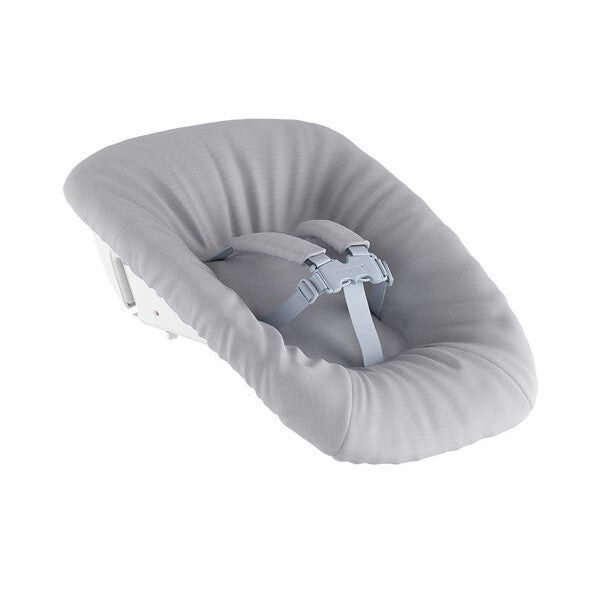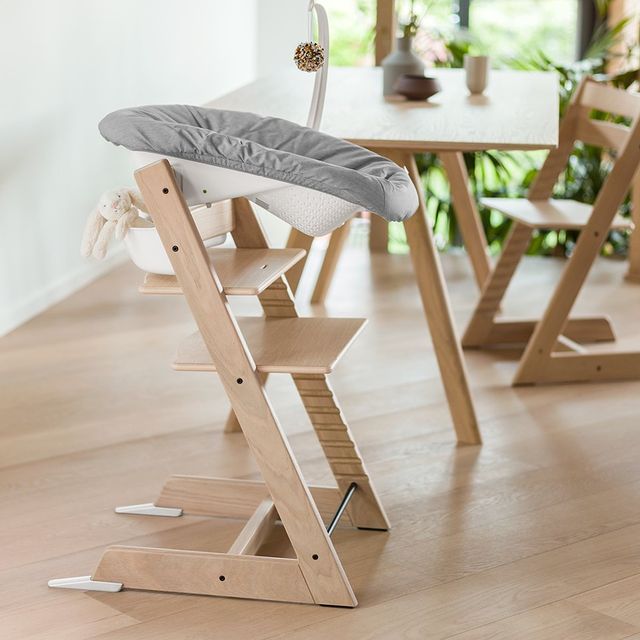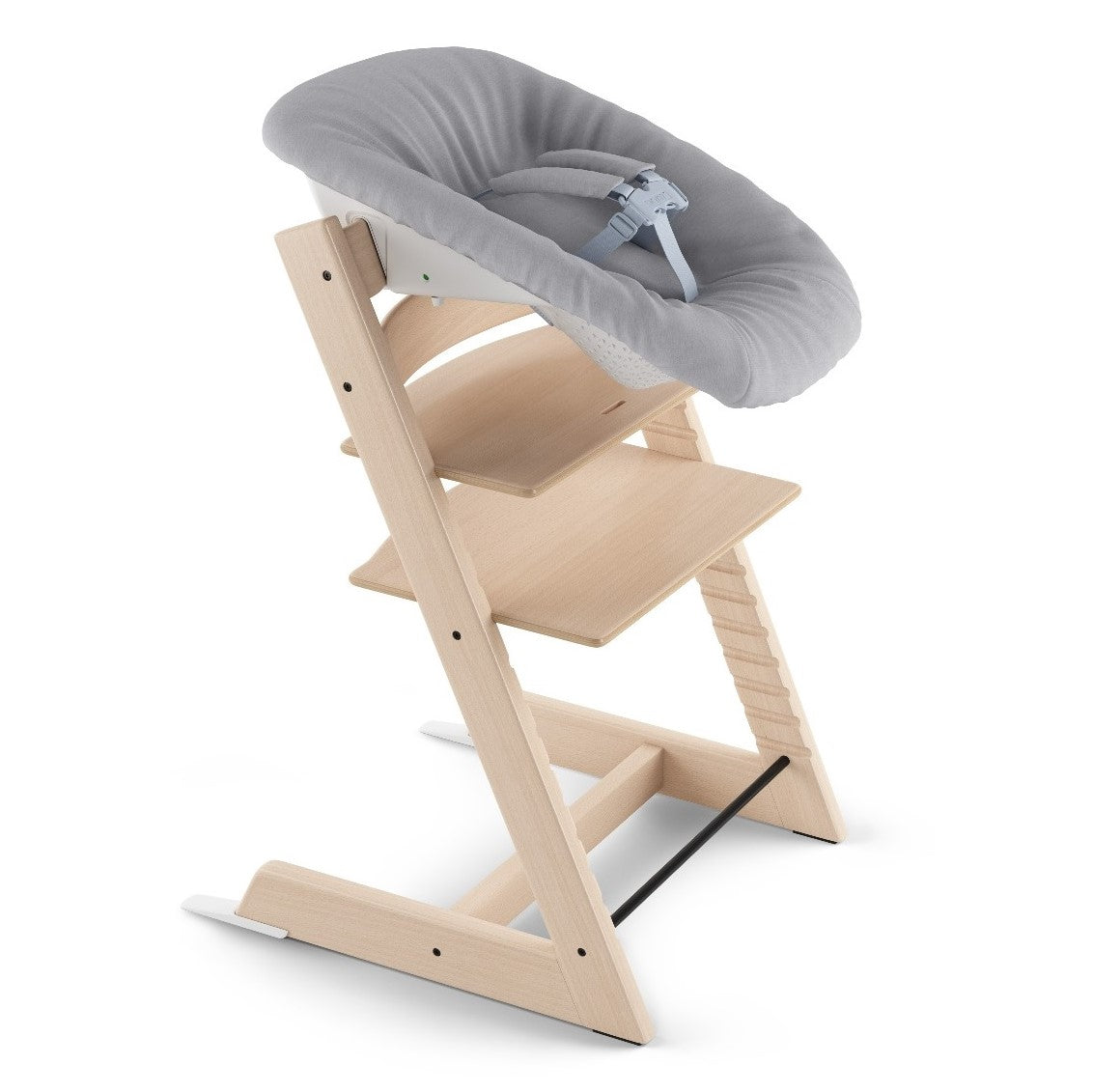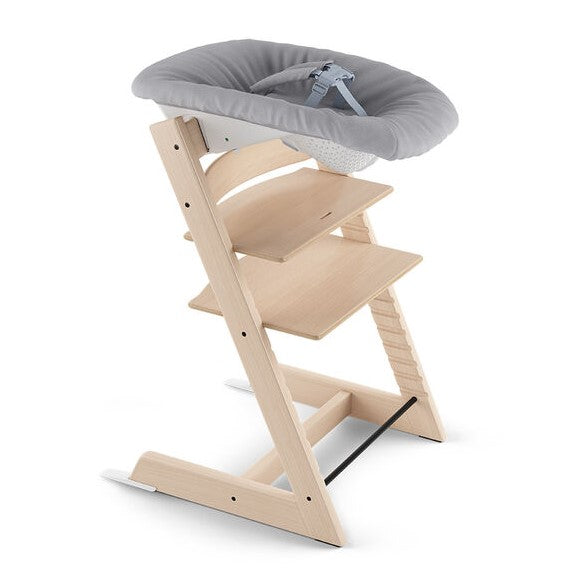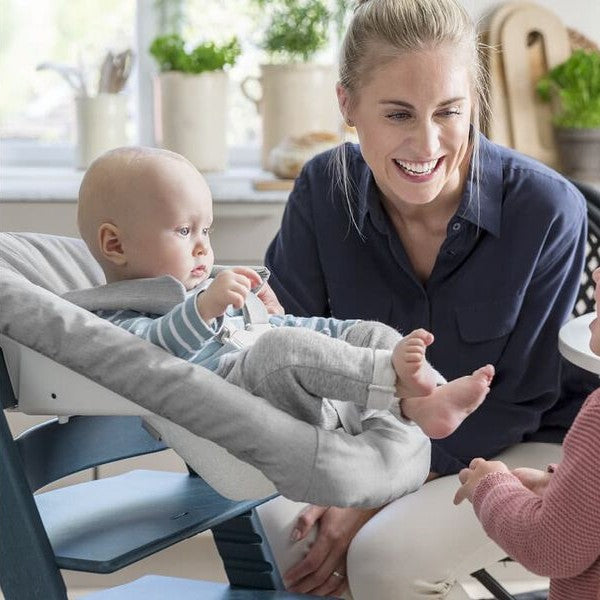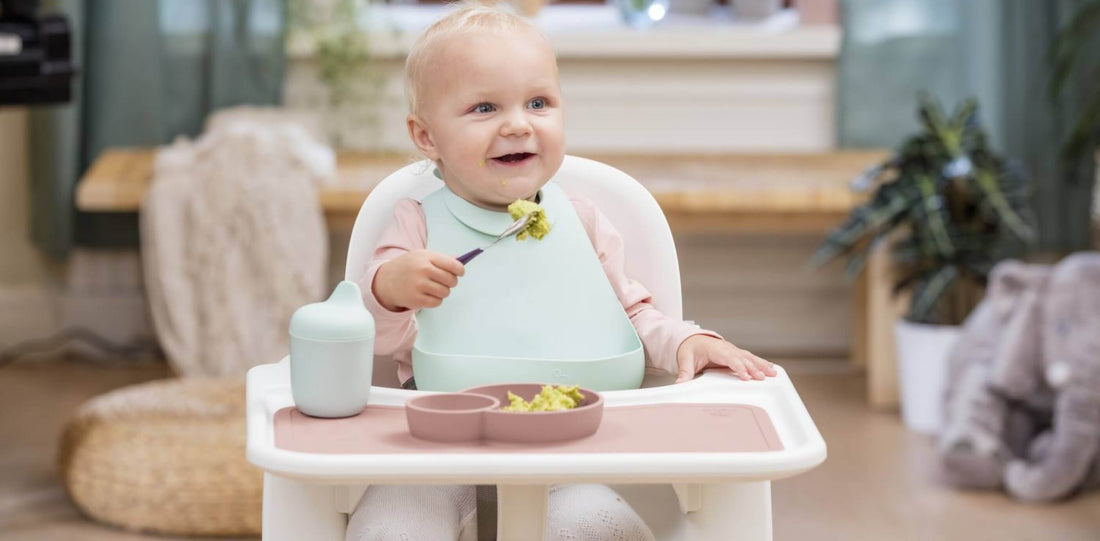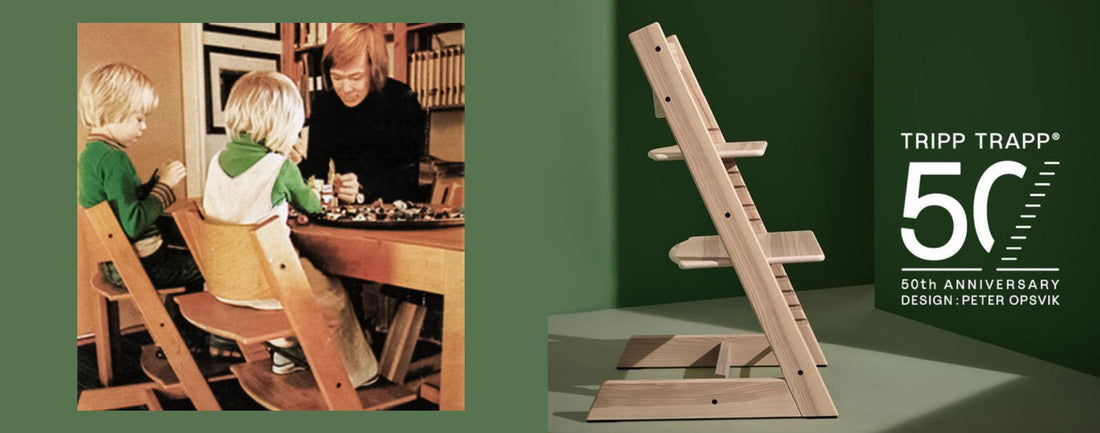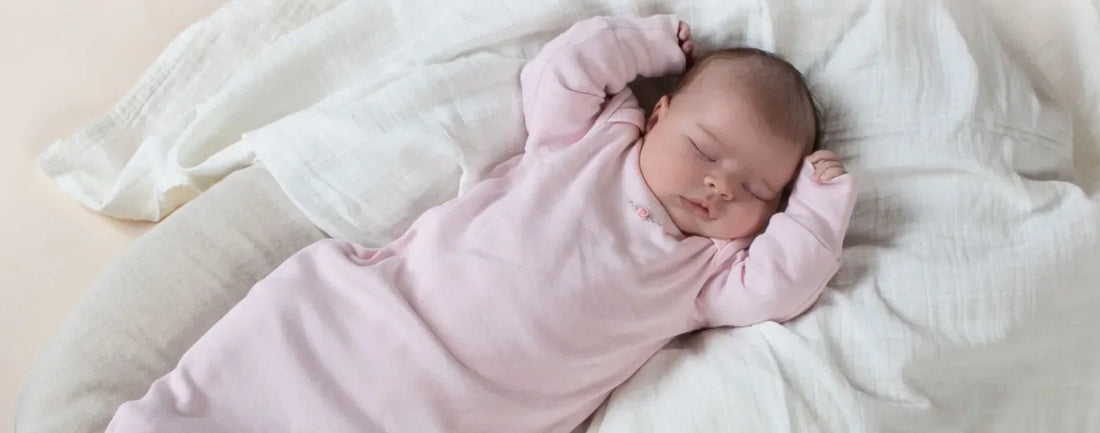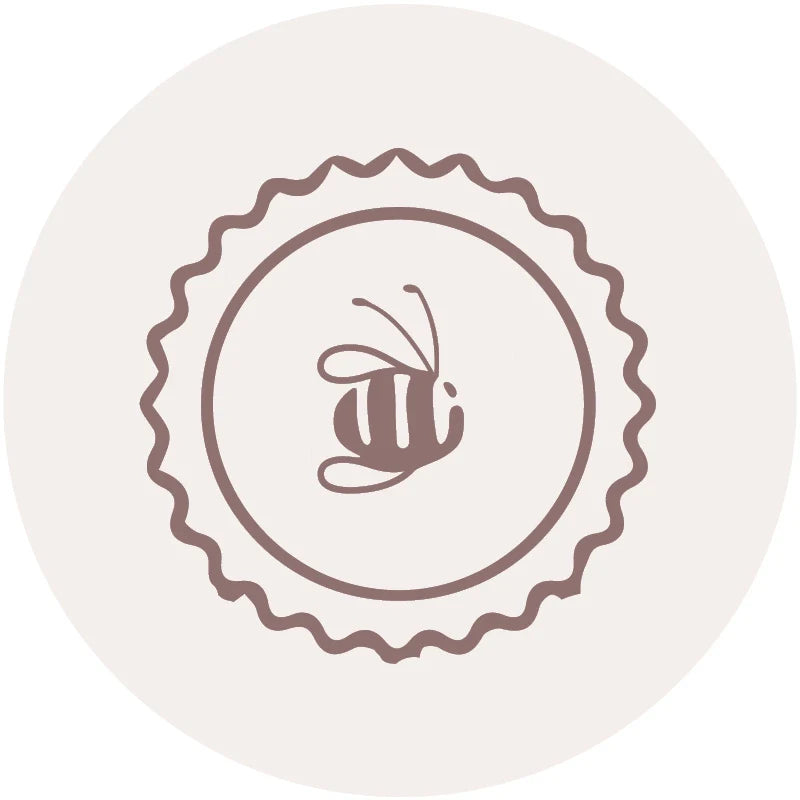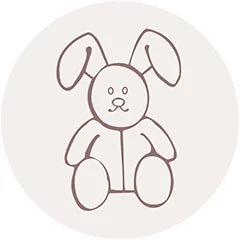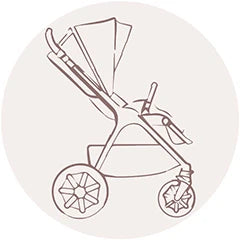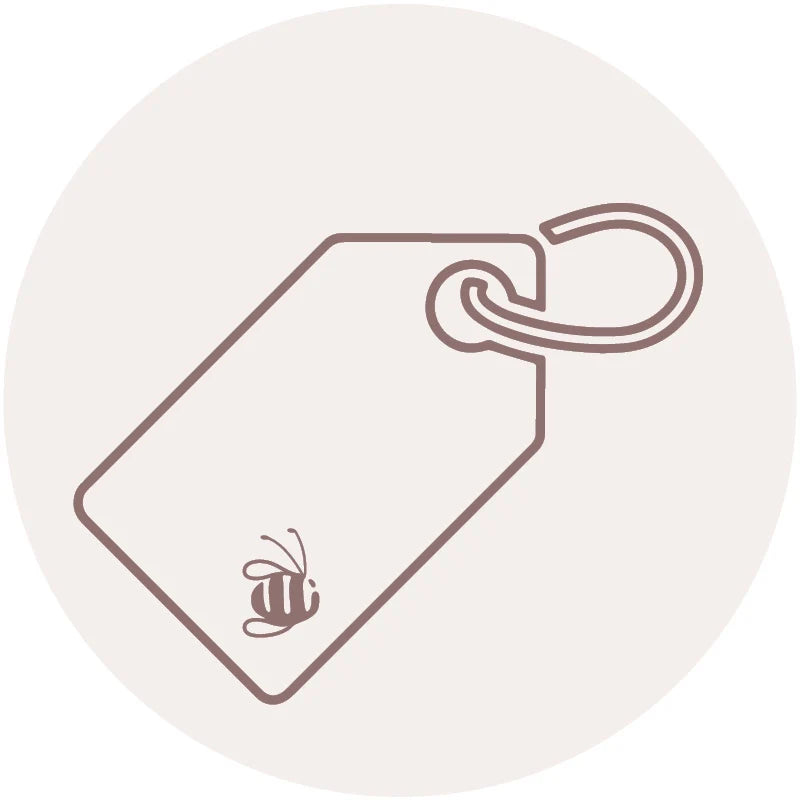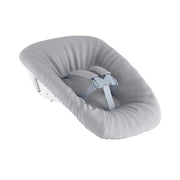Stokke Tripp Trapp Newborn Set
Stokke Tripp Trapp Newborn Set
SKU:526101
Clothing Prem to 18 Months
| Size | Age Guide | Weight | Height |
|---|---|---|---|
| Premature | Premature or Small Newborn | Up to 4Kg | Up to 55cm |
| Newborn | 0-3 months | 4-6Kg | Up to 62cm |
| 3 Month | 3-6 months | 6-8Kg | Up to 68cm |
| 6 Month | 6-12 Month | 8-10Kg | Up to 76cm |
| 12 Month | 12-18 Month | 10-12Kg | Up to 84cm |
| 18 Month | 18-24 Month | 12-14Kg | Up to 92cm |
Clothing 2 to 6 Years
| Size | Age Guide | Height | Chest | Waist | Hip |
|---|---|---|---|---|---|
| 2 Year | 2-3 Years | Up to 100 cm | 56 | 51 | 58 |
| 3 Year | 3-4 Years | Up to 105 cm | 58 | 53 | 60 |
| 4 Year | 4-5 Years | Up to 110 cm | 60 | 55 | 62 |
| 5 Year | 5-6 Years | Up to 115 cm | 62 | 57 | 64 |
| 6 Year | 6-7 Years | Up to 120 cm | 64 | 59 | 66 |
Beanie Size Guide
| Size | Head Circumference | Age Guide |
|---|---|---|
| Premature | 31-35 cm | Premature or Small Newborn |
| Newborn | 35-40 cm | Newborn |
| Small | 40-43 cm | 3-6 Months |
| Medium | 43-47 cm | 6-18 Months |
| Large | 47-52 cm | 18-3 Years |
Sunhat Size Guide
| Size | Head Circumference | Age Guide |
|---|---|---|
| Newborn | 37-40 cm | Newborn |
| Small | 40-43 cm | 3-6 Months |
| Medium | 43-46 cm | 6-12 Months |
| Large | 46-49 cm | 12-24 Months |
| Xtra Large | 49-54 cm | 2-4 Years |
Sleep Pods Size Guide
| Size | Weight | Age Guide | Measurement(Back to Hem) |
|---|---|---|---|
| Newborn | 0-6 kgs | 0-3 Months | 60.5 cm |
| Small | 0-8 kgs | 3-6 Months | 66 cm |
Booties Size Guide
| Size | Age Guide |
|---|---|
| Newborn | 0-3 Months |
| Small | 3-6 Months |
| Medium | 6-12 Months |
| Large | 12-18 Months |
Pretty Brave Baby
| Foot Length (mm) | Insole Length (mm) | EU | UK | Age | INT |
|---|---|---|---|---|---|
| 95-104 | 110 | 16/17 | 2 | 0-6m | S |
| 104-114 | 118 | 18 | 3 | 6-12m | M |
| 114-123 | 127 | 19/20 | 4.5 | 12-18m | L |
| 123-137 | 142 | 21/22 | 5.5 | 16-22m | XL |
Pretty Brave 1st Walker
| Foot Length (mm) | Insole Length (mm) | EU | UK | Age |
|---|---|---|---|---|
| 114-120 | 125-128 | 19 | 3 | 1 yr |
| 120-126 | 132-135 | 20 | 3.5 | 1-2 yrs |
| 126-132 | 138.5-141.5 | 21 | 4.5 | 1-2 yrs |
| 132-138 | 145-148.5 | 22 | 5 | 2 yrs |
Crywolf Swim Nappy
| Size | Length (waist to crotch) | Crotch Width (side to side) |
|---|---|---|
| 0-1 yr | 1-2 yrs | |
| 37 | 38 | |
| 14.5 | 15.5 |
Crywolf Rash Suit
| Size | Length (back neck to crotch) | Chest (arm to arm) | Waist (side to side) | Sleeve (neck to cuff) | Neck Opening(diameter) |
|---|---|---|---|---|---|
| 6-12 Months | 1 yr | 2 yrs | 3 yrs | ||
| 40 | 42 | 44 | 46 | ||
| 25 | 26 | 27 | 28 | ||
| 24 | 25 | 26 | 27 | ||
| 30 | 31.5 | 33 | 34.5 | ||
| 13.25 | 13.25 | 13.8 | 14.3 |
In stock
Couldn't load pickup availability
Overview
Overview
The Tripp Trapp® Newborn Set is designed to encourage bonding from the very beginning. Comfortable and ergonomic, it cradles your newborn, lifting them to table height. Now with 2 angle adjustable positions and excellent leg support, your little one is assured a cozy, nest-like environment they are sure to enjoy. This enables eye contact, promoting interaction during meals and gatherings around the table. It´s a great way to keep your baby close while building strong relationships with the whole family. Safe and simple to use, the Newborn Set can easily be attached and removed from the Tripp Trapp® chair. Red-green indicators reassure you that it is mounted correctly while a 5-point safety harness with protective shoulder pads keep baby extra secure. The toy hanger lets your little one keep their favorite toy close at hand to keep them entertained while helping to stimulate their evolving motor skills.
Suitable from newborn up to 9kg.
What's Included
What's Included
User Guide
User Guide
Delivery and Returns
Delivery and Returns
- Delivery: Free within NZ on orders over $100 (excluding bulky items) or $8 standard shipping
- Returns: Accepted within 14 days of receipt with proof of purchase
- Some items are excluded from returns including sale items, hardware, car seats, prams, monitors and personal items - please click here for the full list.
Share this product
Recently Viewed Products
Related Blogs
Keep your Baby Close - Highchairs
Family Dinners are more important than you think. How eating together makes your baby smarter and healthier: There’s no denying it, the dinner table is the heart of family life. Research has also shown the critical role it plays in strengthening your bonds, and in helping your child’s development. Studies have shown that dinnertime chat is even more important for boosting your child's vocabulary than reading aloud. Young children learn 1,000 rare words at the dinner table, compared to only 143 from books. This increased vocabulary means your kids will read earlier and more easily. If your kids are school-aged, having them join you at the dinner table is possibly more important for their grades than making sure they get enough time in school, doing homework, playing sports or making art. There’s also a connection between family dinners and a bunch of health benefits – your kids will eat more fruit and veg , which may be why young adults who ate with their families as teens often have healthier eating habits and are less likely to be obese . Studies have also found that family dinners make kids happier , and less likely to suffer from depression or engage in risky behaviours . Embed family dinner habits early While you and your partner may have preferred to eat in front of the TV, your new baby should begin to change all that. The sooner you can establish the ritual of family dinners the better – ideally from infancy when they’re busy learning rules, words and habits. That can be easier said than done if you don’t have the right equipment. Highchairs are generally designed for older babies, and with little thought to facilitating family dinners. With bulky construction and a tray in the way, it’s almost impossible to get your baby close enough to the table to be part of the family dynamic. It’s why many parents end up feeding their babies separately and away from the table. For older children, adult chairs (even with boosters or cushions) can make dinner times just feel like hard work. Seated too low for their food, and with feet dangling, they can quickly become uncomfortable so they’re less able to concentrate on their meal, and on the family chit-chat going on around them. While you can find solutions for all of these issues for each stage, there are highchair systems that can grow alongside your baby, from infancy all the way to adulthood. Stokke® highchairs for easy family dinners from birth up The Tripp Trapp ® and Steps ™ highchairs from Stokke are designed to do just that, with fully adjustable seats and footrests. Clip on the safe, ergonomically designed Tripp Trapp or Steps Newborn Set and you can have your baby with you at the table right from the start. Perfect positioning and excellent leg support let your little one relax and enjoy the family time. It’s a great way to help your baby build strong relationships with the whole family – and means one parent isn’t absent from the dinner table. Once your baby can sit up unsupported, it’s time for the baby set for Tripp Trapp or for Steps to keep them safe, supported and comfortable at the table. Cushions are available for both the Tripp Trapp and Steps systems, too. Silicone EZPZ ™ mats for the Tripp Trapp and Steps chairs have built-in bowls to minimise spillage. They can be used with the Tripp Trapp or Steps trays or placed directly on your dinner table. Older children will also enjoy the Tripp Trapp Table Top Tray , with their suction bases and fun, educational motifs. The Tripp Trapp’s timeless Scandinavian design was first produced in 1976 and hasn’t changed since. Steps is a newer addition to the Stokke family, with a look to complement a range of interior styles. Both chairs come in a range of colours to mix and match to your home décor and with a warranty when you register your new chair’s serial number - Tripp Trapp is 7 years and Steps is 3 years. Get the best from your family meals Do yourselves and your children a big favour – don’t let television horn in on precious and valuable family meal times. The dinner table has been shown to be the best place for all kinds of learning and development, including vocabulary, eating habits, relationships and life-long health. Even when you understand the vital importance of family meals, it can be hard logistically to include your kids right from the start – tradition highchairs don’t help much! It’s good to know that Stokke® can provide a Tripp Trapp® or Steps™ seating system, allowing your kids to join the family meal right from newborn, and get the very best start possible.
Learn moreTripp Trapp - Celebrating the 50th Anniversary
Celebrating the 50th anniversary of the chair that grows with the child™ This year marks the 50th anniversary of the iconic Tripp Trapp® chair that so many families love! Designed in Norway by Peter Opsvik, and launched in 1972, millions of children around the world have since enjoyed a seat at the table. When Tripp Trapp® was first introduced, it revolutionized the entire children´s seating category. No one had seen anything like it. Brilliant in its simplicity, it could be comfortably used at every stage of childhood and beyond. Truly one-of-a-kind, the Tripp Trapp® chair can be used for a lifetime and for generations to come. This is longevity in its purest form. Award-Winning Now one of Scandinavia’s most iconic designs, this legendary Norwegian chair has become a worldwide favourite, with over 13 million sold in more than 80 countries. Loved by families everywhere, it has also earned numerous prestigious design awards, including: German Design Award GOLD" in 2020 as the "best highchair" by the National Parenting Product Awards Selected as one of Fortune Magazine´s top 100 greatest designs of modern times Tripp Trapp® regularly appears in international media. In fact, its innovative looks and function also secure Tripp Trapp® a prominent position in interior exhibitions in museums such as MoMa in New York and V&A, the Victoria and Albert Museum London. Philosophy The key to its success is timeless, quality design and the ability to grow with your child, enabling them to sit together with the rest of the family around the table to take part in life around the table which is crucial to children´s development, creativity, as well as language and motor skills. The Design Story 50 years ago, when Peter Opsvik´s son Tor was two years old, Opsvik discovered that Tor had outgrown his high chair and could not find one which allowed Tor to sit comfortably at table height with the rest of the family. From this observation, Opsvik changed the way we look at children´s seating by creating a chair that would truly give children of all ages a comfortable, ergonomic seat at the table. Tripp Trapp® was invented. Celebrating a Milestone Today, as then, the adjustable design allows freedom of movement with both depth- and height adjustable seat- and footplates. When adjusted correctly, your child is ensured a correct seating position at any age. Though times have changed, the mystery of being a new parent hasn't. By sitting together at the table with their families, children have been able to connect with the people that care about them most. It´s this connection that allows parent and child to get close, communicate and figure it out together. About Stokke Founded in Ålesund Norway in 1932, Stokke began life as a manufacturer of high-quality furniture. The first product for children was launched in 1972 –the iconic Tripp Trapp® chair, which has sold more than 13 million units and remains a core product in the Stokke collection. Since 2006 Stokke has focused exclusively on designing premium children ́s furniture and equipment within the highchair, stroller, baby carrier, home textiles and nursery segments. The products promote bonding between parent and child and ensure healthy development for young children. Owned and operated by three generations of the Stokke family until 2014, Stokke was acquired by Belgium based NXMH, wholly owned by NXC in South Korea. Stokke has worldwide distribution in over 70 countries, as well as its own subsidiaries in Europe, the United States and Asia.
Learn moreDimples Highchair Buying Guide
Choosing the Right Highchair for Your Baby 🍽️ When it comes time to start solids, your baby deserves only the best. A good highchair should be safe, ergonomic, and built to last — not just through the puree phase, but right through toddlerhood and beyond. One key feature to look for? A footrest. It might seem minor, but it plays a big role in supporting healthy hip development. Paediatricians note that having stable foot support helps babies build motor skills, which leads to better eating, improved concentration, and less fidgeting at mealtimes (win-win). At Dimples, we offer a carefully chosen range of highchairs that are beautifully designed and built with your baby’s comfort in mind. Here are some of our favourites: Stokke Tripp Trapp A timeless classic that grows with your child. The Stokke Tripp Trapp is fully adjustable, with height and depth settings on both the seat and footrest, so you can tailor the fit as your little one grows. The Tripp Trapp has two attachments available (see more on these below), so you can use the chair from birth - all the way through to adulthood! Designed to sit right up at the table, the Tripp Trapp helps make mealtimes feel like a family occasion, right from the start. It comes in a beautiful range of colours to match any home. Age range: From birth with newborn set; from 6 months with the baby set Weight limit: Up to 136 kg Tripp Trapp Newborn Set Suitable from birth up to 9 kg, the Newborn Set lifts your baby up to table height and surrounds them in a soft, nest-like seat. With two adjustable angles, great leg support, and a secure five-point harness, it’s perfect for safe and cozy bonding during mealtimes or family chats. Age range: 0–6 months (approx.) Weight limit: 9 kg Tripp Trapp Baby Set Once baby is ready to start solids, the Baby Set provides the right amount of support with a high backrest and secure harness. Add the Tripp Trapp Tray and Cushion for a complete mealtime setup that’s both practical and stylish. The cushions come in a range of lovely patterns to complement your kitchen décor. Age range: From 6–36 months (when baby can sit unaided) Weight limit: Up to 15 kg Stokke Nomi Highchair Designed by the same creator as the Tripp Trapp, the Stokke Nomi brings a modern twist to ergonomic seating. Lightweight yet incredibly sturdy, this highchair supports your baby from newborn through to adulthood. The flowing design offers excellent freedom of movement and encourages active sitting — important for developing posture and coordination. The footrest is easily adjustable without tools, and the chair's curved edges and organic shape make it a standout in any dining space. Age range: From birth with the Nomi Baby Set; from 6 months as a highchair Weight limit: Up to 150 kg Stokke Clikk Highchair Minimalist, modern, and made to make life easier. The Stokke Clikk arrives in one compact box and clicks together in minutes — no tools required. It includes everything you need: seat, tray, footrest, and harness. The ergonomic design supports your baby’s hips and posture, and the tray is dishwasher-safe for fuss-free clean-up. Add the Clikk Cushion for extra comfort, or get the Travel Bag if you’re heading away. Light, durable, and practical — this one’s a winner for home or holidays. Age range: 6 months to 3 years Weight limit: Up to 15 kg Nuna Bryn Highchair Sleek, sturdy, and thoughtfully designed — the Nuna Bryn is all about making mealtimes smoother. This highchair features an easy-to-adjust recline, a secure five-point harness, and a smooth seat surface that wipes clean in seconds. The tray is removable so baby can be brought closer to the table. With its clean lines and high-end materials, the Bryn blends beautifully into any home. Age range: 6 months to approximately 3 years Weight limit: Up to 15 kg Find Your Perfect Fit at Dimples Whether you’re after a highchair that grows with your child, fits your décor, or travels easily, Dimples has a range of safe, stylish, and practical options to suit your family’s lifestyle. Shop online or visit us in-store — we’re here to help you find the perfect seat for your little one’s next stage.
Learn moreNewborns & Sleep: What to Expect and Survival Tips
Bringing a new baby home is one of life’s most beautiful - and exhausting - adventures. In this blog, Family Sleep & Wellness Coach, Lauren Moran from Little Dreamers, shares her expert advice on newborn sleep in the fourth trimester. With a warm, realistic approach, she helps parents feel empowered, informed, and supported through those early weeks, offering practical tips for creating a nurturing sleep environment and caring for yourself, too. Newborns & Sleep: What to Expect and Survival Tips By Lauren Moran from Little Dreamers https://www.littledreamers.co.nz/ Instagram: @little.dreamers.nz Congratulations parents! Whether this is your first or fourth bubba in your beautiful family, there is so much that can still feel overwhelming (or it’s a memory you’ve blanked out from last time!), but we are here to reassure you in those early days. Also known as the fourth trimester, those first 12 weeks following birth while trying to navigate your baby’s feeding and sleeping patterns can be quite the whirlwind. This blog is designed to help empower you, educate you, and normalise newborn sleep so that you feel confident to understand and support your little love. Let’s start this journey with “there is no such thing as bad habits when it comes to supporting your baby”. Yes, you heard that right! No such thing. Forget what social media, society or family/friends tell you. You do what works best for you and your family. There may come a time when those ways no longer work for you, which is totally fine, and we can change that. As you step into this new season remember you are nothing short of amazing and your little one is lucky to have you. Sleep is not only a necessity for your baby, but also you! We all need it. Sleep enables the body to repair itself, replenish those energy levels and regulate brain functions. When I have had more sleep, I feel like a better person showing up for myself and my family. It positively impacts our emotional and physical well-being too. So what can you expect in that fourth trimester? It is a busy, yet wonderful whirlwind of events that can bring about so much change both physically and emotionally. Feeling like you need to just cry? Go for it! Don’t know why? Many of us don’t! Your littlest love is adapting to life earthside and you are recovering from growing them and bringing them into this world. Offering love, care and comfort is exactly what’s needed for you both. With emotions running at an all-time high, it is important to focus on yourself too. I vividly remember my post-natal midwife coming for her first appointment and the first thing she said was that she was there for me. As a first-time mum I was slightly confused as I thought she would be looking at my daughter and making sure she was okay – and she did just that, but also had her focus on me. It is incredibly important to prioritise self-care during this time. That fourth trimester can be so overwhelming so making sure you prioritise your own body and mind will be key. It certainly may come with a feeling of guilt, just know that these are all very normal feelings & thoughts. Self-care is a necessity, not a luxury, for you both. So what can you focus on in the early days in terms of sleep? Let’s start with sleep environment. Laying some healthy foundations from the get go will not only aid in easier settling but also support your baby to stay asleep and get those much needed zzzz onboard: ● Darkness - When our little one enters a dark room, their bodies start to produce melatonin (sleepy hormone). This hormone is produced in the pineal gland and fluctuates throughout the day and night. Ensuring a dark sleep space will help your baby flood themselves with sleep hormones and support settling and restorative sleep periods. ● White noise - This is a fantastic tool to use within their first 18m of life. It replicates those sounds heard in the womb, which in those early days bring them safety and comfort. It can also drown out any noises outside the bedroom that might startle or wake them. It also creates a consistent sleep environment and positive sleep association for them when building on your sleep shaping. ● Temperature - Keep the room a good temperature so that your little one isn’t too hot or too cold. Check this guide on dressing your little one depending on the temperature of the room. The temperature often drops around 3 or 4am and can often be a reason our little ones wake around this time. Feel like you’ve nailed the above and bubs still doesn’t want to sleep in their cot/bassinet? We get it. And this is totally normal and expected – it’s different! Embrace those newborn snugs, strap your little one to you, be nap trapped, find a good series to watch, feed them to sleep, rock them, pat them, and swap out with the support around you if you need to. Your smell, heartbeat, skin feel and voice is their safe place of comfort (and of course it would be!). Spend those first couple of months getting to know your little one and understanding those hungry cues, tired cues and awake windows. Newborns won’t be able to settle themselves consistently until closer to 4 months old so contact and assisted naps will be your best friend. Your little one will rely on you to support them and assist them in getting to sleep. Setting up the right sleep environment will be key when you’re ready to begin supporting them in their own sleep space. Start one step at a time. Awake windows and tired cues Are they under tired, overtired or just hungry? Understanding these windows and cues will be key in having a more settled baby and parent! In those early days you will find those awake times are mostly spent feeding with a small gap at the end for a burp or eye-to-eye contact with you. An awake time is from the moment your baby wakes through to the moment they are sleeping again. Awake Windows in those first four months can look like: 0-3 weeks: 45 – 60 minutes 3-6 weeks: 1 – 1:15 hour 6-9 weeks: 1:15 – 1.5 hours 9-12 weeks: 1.5 hours 12-16 weeks: 1.5 – 2 hours Once your little one is nearing 4 months old you can look at a basic routine rather than awake windows. Our 4-7 month routine guide is perfect for this. You will see that awake windows get longer as our little people’s sleep needs change and this will depend on baby’s age, time of day and whether they are going through a nap transition. In those first 6-8 weeks it is normal to see a later bedtime as our little one’s circadian rhythms don’t mature until closer to 4 months of age (meaning that they don’t understand the difference between day and night) and they may be cluster feeding to get those calories in before bedtime. Being proactive and offering sleep before they get overtired is a great win. They are signs your little one is letting you know it is time to start winding down and getting ready for some sleep before they become overstimulated and enter a state of hyperarousal. Let’s have a look at some tired cues to watch out for: ● Clenching hands into a fist ● Pulling at their ears or hair ● Jerky or shaking movements ● Yawning ● Rubbing eyes ● Vacant look/staring into space ● Quieter/less chatty ● Grizzling ● Sucking thumb/hand Feeding and partner involvement Whether you’re choosing to breastfeed, bottle feed, formula feed or mixed feeding, it’s a journey! During those first 2-3 months your little one will look to feed whenever they can. This is what is commonly known as ‘on-demand feeding’. And it is just as it sounds – feeding your baby when they are showing signs of being hungry. What does this look like? ● Feeding every 2-3 hours (time starts from the start of a feed) can encourage them to consume more calories during the day and can reflect in longer overnight stretches of sleep ● Feeding on demand will help to establish breastmilk supply (if breastfeeding) ● If bottle feeding, follow their cues as volumes of milk will change as their needs change Babies are really great calorie regulators so you don’t need to worry about over-feeding them. In those first 4 months your little one will feed frequently which can be very time consuming. They still have little tummies so the capacity to stay full for long isn’t quite there, and they may wake frequently to feed. How can non-breastfeeding partners support routine and settling? Research now shows that a non-breastfeeding partner’s role in supporting breastfeeding and home routine can be a game-changer! Figuring out how to tackle the day and night time as a dynamic duo can help your breastfeeding partner to feel more rested, and help you as the non-breastfeeding partner to feel actively involved in your little one's care. As we got into the thick of feeding with our second, my husband inspired me with how he showed me he was there with me through this: ● Dinner preparation & cooking ● Getting the bath ready for child 1 & 2 ● Supporting the wind down routine ● Doing the initial settling for bed after a top up feed ● Burping the baby ● Changing nappy in between feeds ● Turning the night light on overnight Don’t underestimate the power of a small act of support in those early days. We have a whole blog around partner support that is a great read! However you choose to support your littlest love earthside is nothing short of amazing. There is no wrong way to support them and if what you’re doing is working for you, then great! Don’t change a thing! Remember that there are no bad habits when it comes to loving, settling and reassuring YOUR little one. You are doing what works for you that is calming, comforting and reassuring to them. Babies can build on these and rely on them as associations to go to sleep get back to sleep but rest assured, these can be changed if they are no longer working for you in the future.
Learn more

